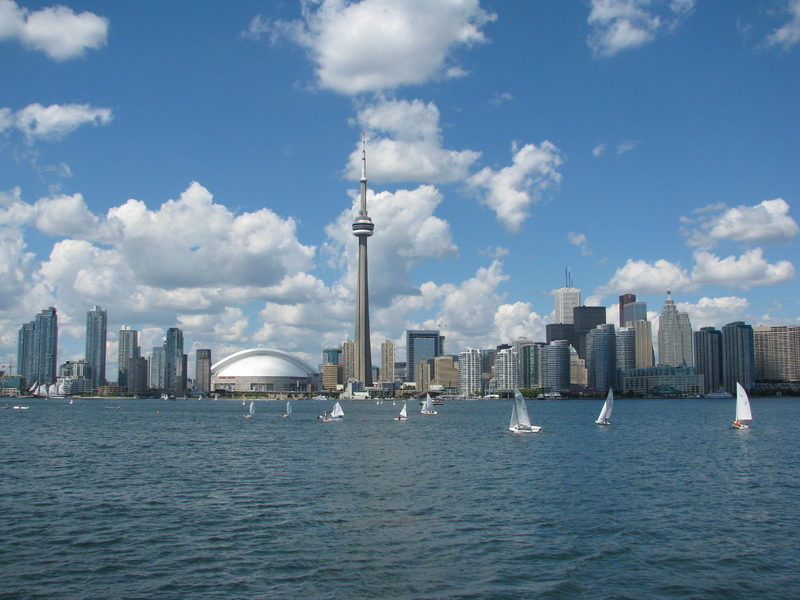The provincial capital of Ontario, Toronto is a bustling, vibrant metropolis whose residents enjoys a diversified economy, high standard of living and a moderately temperate climate. It has the largest urban area population of any city in Canada, with the 2010 estimates approximating 5,000,000 inhabitants.
Toronto is located on the northern shore of Lake Ontario in a region once inhabited by both the Iroquois and Huron tribes. In the 1750s French explorers established the first fort in the area, but it was not until the 19th century that Toronto became incorporated as a Canadian city. For a brief time it was the capital of the Province of Canada under the British flag, and in the 1850s the first real growth explosion occurred due to the extension of several major railways leading from Quebec and Montreal westward.
 Toronto received a great number of immigrants from all over the world following W.W. II and today has a greatly diversified ethnic makeup. The city has a large Asian population as well as districts that are marked by the culture of several European countries.
Toronto received a great number of immigrants from all over the world following W.W. II and today has a greatly diversified ethnic makeup. The city has a large Asian population as well as districts that are marked by the culture of several European countries.
Toronto is located at the outflow of two rivers, the Humber River to the west of the central business district and the Don River east of downtown. The topography of the city is accented by the may ravines and bluffs that overlook the lake as well as the riverbanks and the creeks that form their tributaries. Because of this Toronto is well-known for its many interrupted avenues and boulevards, which terminate next to hills and then continue on the other side.
Toronto has an extremely large number of architectural wonders including the famous CN Tower, which at over 1,815 ft. (553 meters) was until 2007 the tallest freestanding structure in the world. Also of note is the Art Gallery of Ontario and the modern Allen Lambert Galleria. The historical buildings in the Distillery District are a wonderful preservation of Victorian style architecture and draw visitors from around the globe. The Rogers Centre (formerly Sky Dome) is the home of the Toronto Blue Jays major league baseball team and is one of the largest retractable roof stadiums on the continent.
Toronto has a moderate climate because of its location in southern Ontario. Summers are generally warm and humid with high temperatures in July averaging 26°C (79°F). Winders are brisk and the city receives approximately 133cm (52 inches) of snowfall per year. About 710mm (28 inches) of rainfall are recorded each year at Pearson International Airport. Rainfall is fairly consistent throughout the year and extensive dry periods are rare.
Toronto is considered one of the most important financial centers in the western hemisphere. The economy is centered around banking, aerospace, medical research, telecommunications, television and film, and the stock market. The Toronto Exchange is the seventh largest in the world in terms of market value, and the city is home to all five of the largest banks in Canada.
The city is divided into distinct neighborhoods, many of which were incorporated cities before being annexed. These include Scarborough, East York, North York and Etobicoke. Old Toronto is near the financial district and contains most the historical buildings from the 1800s.





